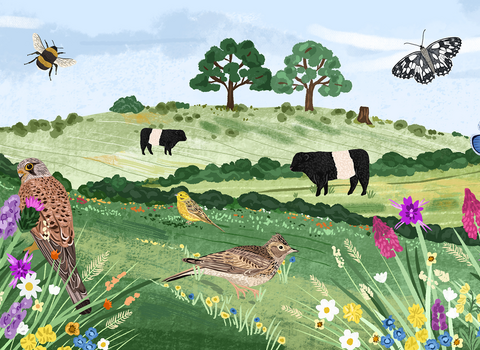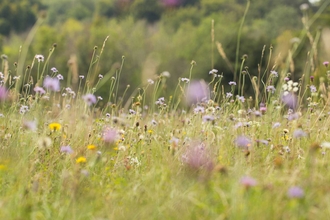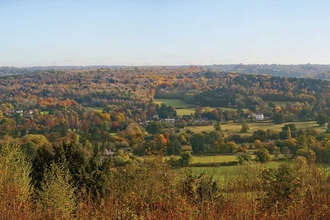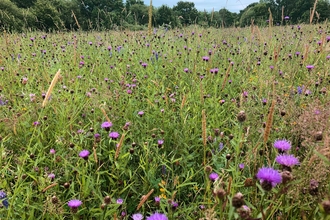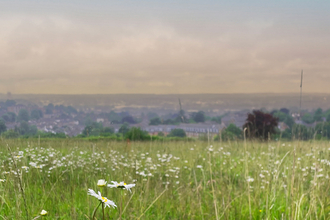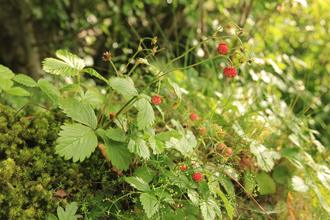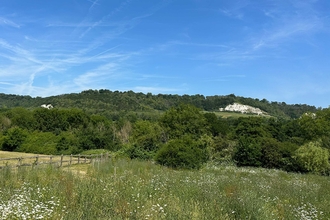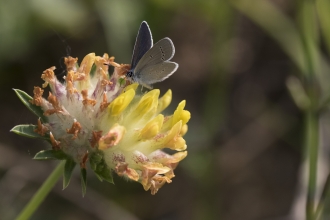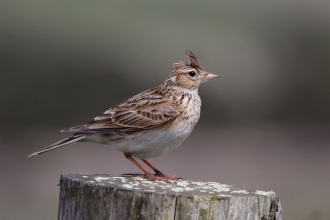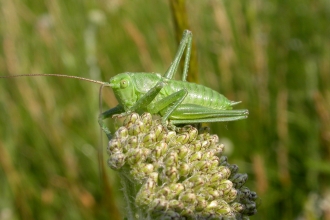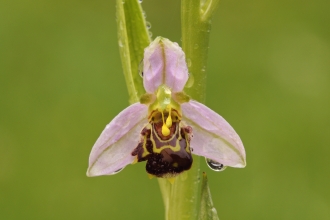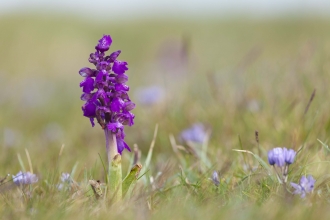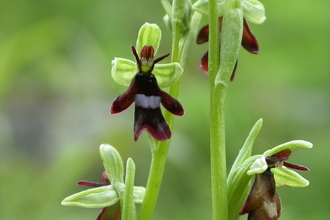Chalk grassland
The chalky soil of Surrey’s North Downs supports an ecosystem of international significance, offering a vital haven for wildflowers and insect life. Keeping these beautiful places healthy sustains a vast range of rare flora and fauna and brings great joy to the people who visit them. Your help will support our conservation grazing operation and help us work with more volunteers to prevent these splendid places from being lost.
What is chalk grassland?
Chalk Grassland habitat, also known as lowland calcareous grassland, is characterised by well drained, open soil, typically in a sunny position. These nutrient-poor conditions are ideal for a spectacular array of flora and fauna. With this habitat nurturing as many as 40 plant species in every square metre, it has vastly more biodiversity than the other type of grassland in the country.
Wild thyme, Dropwort, Bird’s-foot Trefoil, Small Scabious, Kidney Vetch and Salad Burnet nestle on the lime-rich soils, and are complimented by scarcer species such as wild orchids. 35 of Britain's 56 butterfly species are found on chalk grassland.
Scrub is typically present and includes lime-loving species such as Guelder Rose, Dogwood and Burnet Rose, in addition to Hawthorn and Blackthorn. The scrubby grassland margin supports species not found out on the open grassland, such as Common Calamint and the Great Green Bush-cricket.
Why is it important?
Chalk grassland is only found in north-west Europe, and a significant proportion of this is in southern England, including the slopes of the North Downs in Surrey.
Thanks to its huge variety of flora, chalk grassland supports hundreds of invertebrate species, including many rare butterflies such as the Small Blue. The mix of bare ground, short vegetation and longer tussocks together with plenty of flowering plants is ideal for a range of bees, ants, hoverflies, beetles and grasshoppers, many of which are important pollinators.
Without traditional management which mimics the practices of our ancestors, chalk grassland will begin to revert to scrubland or woodland. If this happens many of the rare and unique plant and insect species associated with the habitat will disappear.
Habitat management
Many of our chalk grassland sites are grazed by our specialist crossbred sheep to help maintain the short sward that’s ideal for the low-growing flora. We also selectively graze Belted Galloway cattle across our chalk grassland reserves; this helps to stunt scrub growth, creating space for more plant species and insects to flourish.
Scrub clearance is a labour-intensive process, with our conservation teams supported by generous volunteers using tools to remove blackthorn and other woody plants that would otherwise take over without management. Bare ground and glades allow conditions for wildflowers, pollinators and butterflies to thrive.
Conservation grazing
The continuation or reintroduction of grazing is vital for the survival of habitats such as chalk grassland. Many of the flora and fauna that exist within these landscapes now rely on this type of management to survive. Through their grazing and trampling, the animals craft a diverse tapestry of terrain, nurturing delicate wildflowers, allowing pollinators, such as rare butterflies and bees to flourish,
Surrey's chalk grassland sites
We manage many of Surrey's chalk grassland sites for wildlife. See if you can spot a site near you and visit this fantastic habitat.
Important chalk grassland species
This rare and beautiful habitat hosts hundreds of exciting species.

